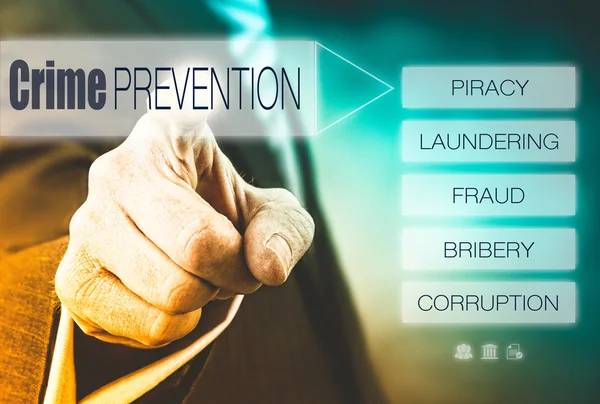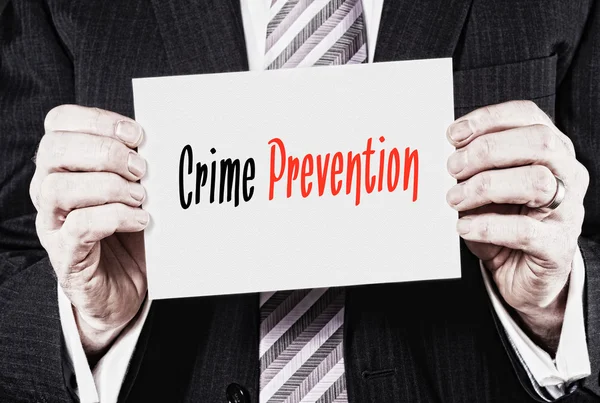Imagine a world where communities thrive, not in fear, but in a shared sense of security. A world where children walk to school without apprehension, and families feel safe in their own neighborhoods. This vision, while aspirational, is achievable through a multi-pronged approach that prioritizes crime prevention. As a crime educator and researcher, I’ve dedicated my career to understanding the root causes of crime and exploring effective strategies to create a safer society. In this article, I’ll delve into the crucial role education plays in crime prevention, empowering you with the knowledge and resources to become an active participant in building a more secure future.

Education: A Powerful Tool for Crime Reduction
Crime is a complex issue with a multitude of contributing factors. Poverty, social inequality, and lack of opportunity can all contribute to a cycle of crime. However, research consistently highlights education as a powerful tool for breaking this cycle. A 2019 study by the National Bureau of Economic Research found that a one-year increase in average education attainment led to a 3% decrease in the national crime rate [1]. This correlation isn’t simply coincidental. Education equips individuals with the knowledge, skills, and values that foster positive social behavior.
- Increased Economic Opportunities: Education is a gateway to better jobs and higher incomes. When individuals have a legitimate path to financial security, the allure of criminal activity diminishes. A 2017 study published in the Journal of Quantitative Criminology found that a 10% increase in the high school graduation rate led to a 6% decrease in property crime [2].
- Critical Thinking and Decision-Making: Education fosters critical thinking skills, allowing individuals to analyze situations, weigh consequences, and make responsible choices. This is particularly important for young people navigating the pressures of adolescence. A 2020 study in the Journal of Youth and Adolescence found that students who participated in social-emotional learning programs demonstrated a significant decrease in delinquent behavior [3].
- Social-Emotional Learning and Conflict Resolution: Education can go beyond academics. Social-emotional learning (SEL) programs equip individuals with skills to manage emotions, build healthy relationships, and resolve conflicts peacefully. Strong social-emotional skills can significantly reduce the likelihood of resorting to violence or destructive behavior.
The Teacher’s Role: Mentors and Crime Prevention Champions
Teachers are more than just educators; they are mentors, role models, and often, confidantes for their students. Their positive influence plays a vital role in shaping young minds and fostering a culture of respect within the classroom and beyond. Here’s how teachers can contribute to crime prevention:
- Mentorship and Positive Role Models: Building strong relationships with students creates a safe space for them to seek guidance and support. When students feel valued and respected by a teacher, they are more likely to make positive choices.
- Crime Prevention Education Integration: Crime prevention education doesn’t have to be a separate subject. It can be seamlessly woven into existing curriculum. For example, teaching conflict resolution skills in history class or discussing the legal implications of cyberbullying in a technology lesson.
- Promoting Respect for Law and Civic Responsibility: Instilling respect for the law and fostering a sense of civic responsibility are crucial aspects of crime prevention. Teachers can encourage healthy discussions about law enforcement, the justice system, and the importance of contributing positively to society.
Combating School Crime: Fostering a Safe Learning Environment
Schools should be sanctuaries of learning, not breeding grounds for crime. Unfortunately, school violence and property crime remain a concern in many communities. Here are some strategies to prevent school crime:
Strategies for Preventing School Crime
| Strategy | Description | Example |
| Security Measures | Implementing security measures like surveillance cameras, improved access control, and security personnel can deter criminal activity. | Installing security cameras in hallways and implementing a “buzz-in” system for visitors. |
| Positive School Climate | Fostering a positive and inclusive school climate where students feel a sense of belonging can significantly reduce the risk of crime. | Organizing school events that promote student participation and showcase diverse talents. |
| Anti-Bullying Programs and Peer Mediation | Bullying can lead to feelings of isolation and anger, potentially escalating into violence. Implementing anti-bullying programs and peer mediation training can create a culture of respect. | Training students in conflict resolution techniques and creating a safe space for reporting bullying incidents. |
Security Education: Empowering Students for Safety
Security education goes beyond school walls, empowering individuals to navigate the complexities of the modern world. Here’s how security education contributes to crime prevention:
- Cyberbullying and Online Safety: The internet can be a breeding ground for cyberbullying and exploitation. Security education programs can equip students with the skills to identify and respond to cyberbullying. This includes teaching them about:
-
- Digital citizenship and responsible online behavior.
- Privacy settings and how to protect personal information.
- Reporting mechanisms for cyberbullying incidents.
- Gang Violence and Drug Abuse Prevention: Gang affiliation and drug use are major contributors to crime. Security education programs can raise awareness of the dangers associated with gangs and drugs, and provide students with the knowledge to resist peer pressure. These programs may include:
- Presentations from law enforcement officials and former gang members.
- Interactive workshops on healthy decision-making and resisting negative influences.
- Resources and support systems for students struggling with substance abuse.
- Personal Safety Measures: Equipping students with personal safety skills empowers them to avoid dangerous situations and respond appropriately if necessary. This can include teaching them about:
- Situational awareness and how to identify potential threats.
- De-escalation techniques and conflict avoidance strategies.
- Personal safety tools like whistles or pepper spray (depending on local regulations).
Community-Based Crime Prevention Initiatives: Standing Together for a Safer Society
Crime prevention is not a solitary endeavor. It thrives on collaboration and a shared commitment to safety. Here’s how communities can work together to prevent crime:
- Neighborhood Watch Programs: Neighborhood watch programs empower residents to look out for each other and report suspicious activity. These programs often involve block parties and community meetings, fostering a sense of cohesion and collective responsibility.
- Youth Mentorship Initiatives: Connecting young people with positive adult role models can significantly reduce their risk of involvement in crime. Mentorship programs can provide guidance, support, and opportunities for personal growth, steering them away from negative influences.
- Community Policing: Building trust between law enforcement and the community is crucial for effective crime prevention. Community policing initiatives involve officers actively engaging with residents, participating in community events, and fostering a sense of partnership.
Common School Crimes and Prevention Strategies
While every school environment is unique, some crimes are more prevalent than others. Let’s explore five common school crimes and effective prevention strategies:
Common School Crimes and Prevention Strategies
| Crime | Description | Prevention Strategies |
| Theft | Stealing personal belongings from students or school property. | Implementing secure lockers, encouraging students to report missing items promptly, and promoting a sense of community ownership over school property. |
| Vandalism | Damage or destruction of school property. | Fostering a sense of pride in the school environment, encouraging students to report vandalism incidents, and implementing after-school programs to provide constructive outlets for energy. |
| Bullying | Repeated verbal, physical, or social harassment of another student. | Implementing anti-bullying programs, training students in conflict resolution techniques, creating safe spaces for reporting bullying incidents, and fostering a culture of respect and inclusion. |
| Drug Possession | Bringing illegal drugs onto school grounds. | Implementing clear drug-free school policies, providing drug abuse prevention education, and offering access to support services for students struggling with substance abuse. |
| Fighting | Physical altercations between students. | Teaching conflict resolution skills, promoting anger management techniques, creating a zero-tolerance policy for violence, and providing mediation resources for resolving disputes peacefully. |
The Benefits of Crime Prevention: Investing in a Brighter Future
Crime prevention isn’t just about safeguarding communities; it’s about investing in a brighter future. Here are some key benefits:
- Increased Public Safety and Community Well-being: When crime rates decrease, communities experience a heightened sense of security, allowing residents to feel safe in their own neighborhoods. This fosters a more positive and vibrant community atmosphere.
- Reduced Financial Burden: Crime carries a hefty financial cost, impacting not only victims but also the justice system and social services. Effective crime prevention strategies can significantly reduce these costs, allowing resources to be directed towards education, healthcare, and other community programs.
- Fostering a Positive Learning Environment: Schools with strong crime prevention measures create a more conducive learning environment. Students feel safer, allowing them to focus on their studies and reach their full potential.
Types of Crime Prevention: A Multi-Faceted Approach
Crime prevention isn’t a one-size-fits-all solution. Here are some of the main approaches:
- Situational Crime Prevention: This approach focuses on reducing opportunities for crime by making it more difficult to commit. Examples include improved lighting in parking lots, installing security cameras, and implementing access control systems.
- Social Crime Prevention: This approach tackles the root causes of crime by addressing social and economic inequalities, providing educational opportunities and promoting access to mental health services. By addressing the underlying factors that contribute to crime, social crime prevention aims to create a society with fewer opportunities for criminal activity to flourish.
- Community-Oriented Policing: This approach emphasizes building trust and collaboration between law enforcement and the communities they serve. Through foot patrols, community policing events, and open communication channels, officers gain a deeper understanding of community needs and residents feel more comfortable reporting crime.
Conclusion: Building a Safer Future Together
Crime prevention is a continuous process that requires sustained effort from individuals, communities, and policymakers. Education, as we have seen, plays a pivotal role in equipping individuals with the knowledge, skills, and values that promote positive social behavior and discourage criminal activity. While education alone cannot solve the complex issue of crime, it serves as a cornerstone for building a safer future.
Call to Action:
Empower yourself and your community. Here are some ways you can get involved:
- Become informed: Research crime prevention strategies and resources available in your community.
- Support educational initiatives: Advocate for programs that promote social-emotional learning and integrate crime prevention education into the curriculum.
- Volunteer your time: Mentor young people, participate in neighborhood watch programs, or support organizations dedicated to crime prevention.
- Partner with law enforcement: Build positive relationships with law enforcement officials and report suspicious activity promptly.
By working together, we can create a world where education is not just a tool for individual success, but a powerful weapon in the fight against crime. Let’s break the cycle, foster a culture of respect, and build a future where every child can walk to school with a sense of security and every community can thrive in peace.
Also Read | The Crime Education Statistics in Schools – Role of the School in Educating Students about Crime

